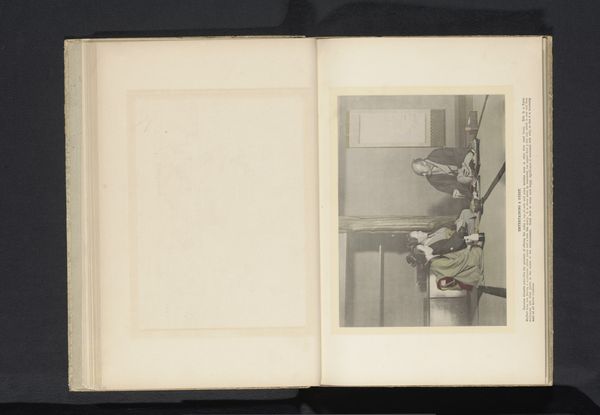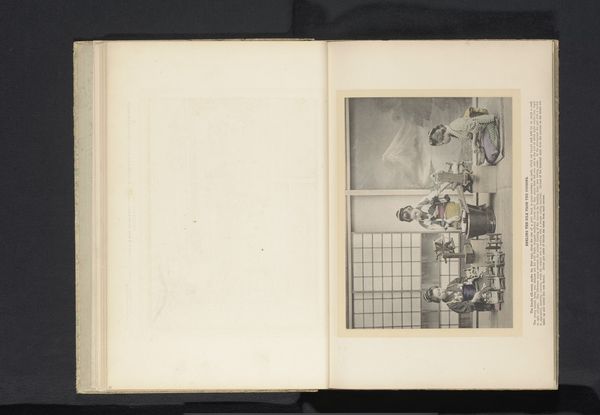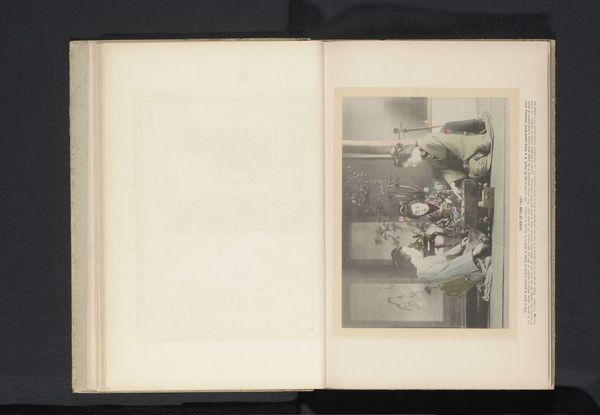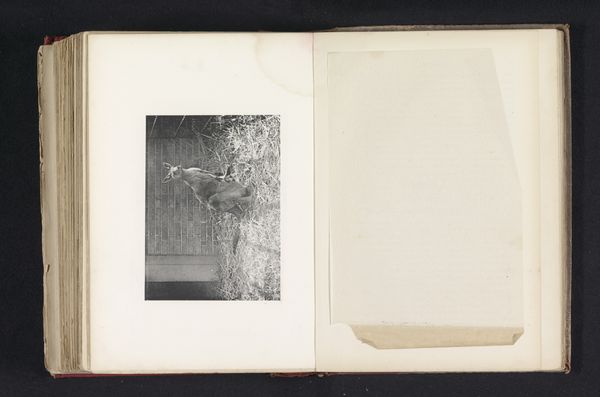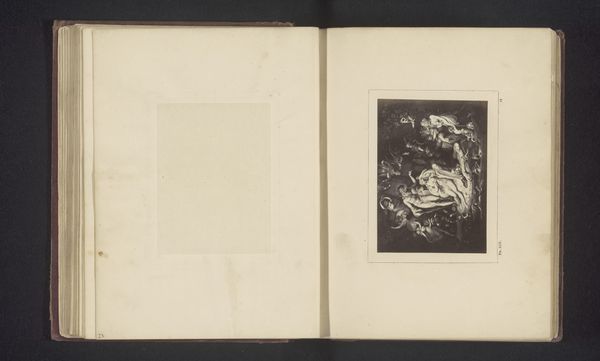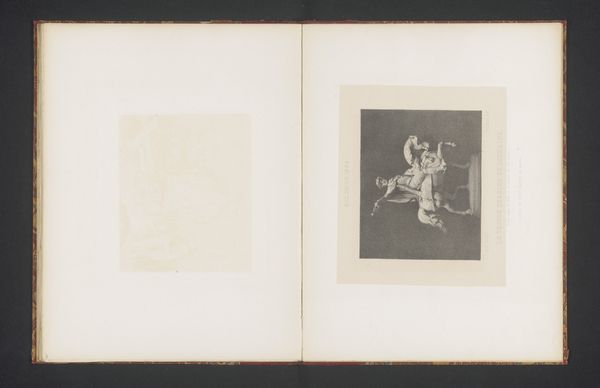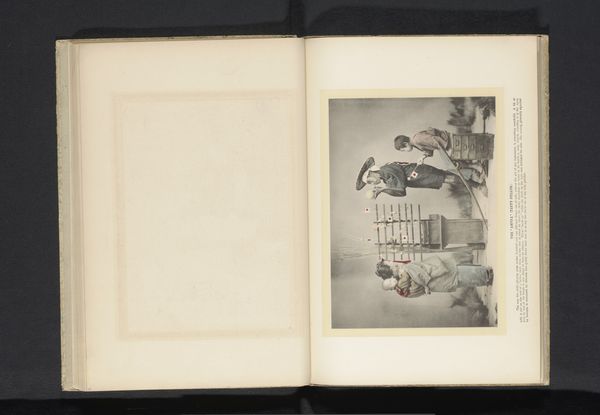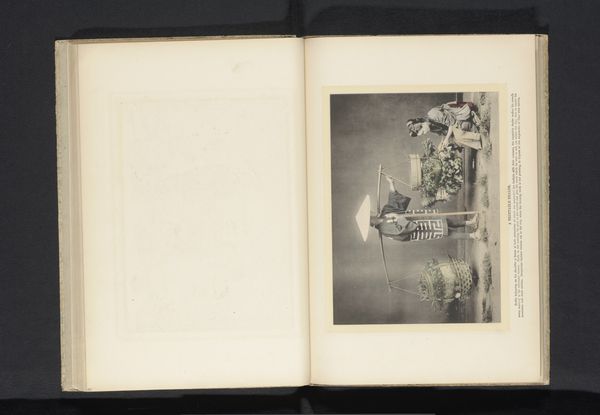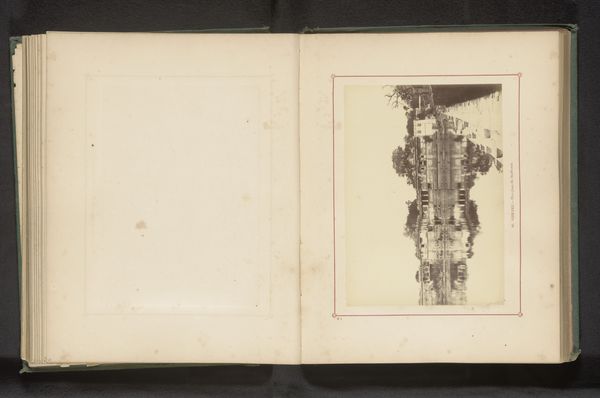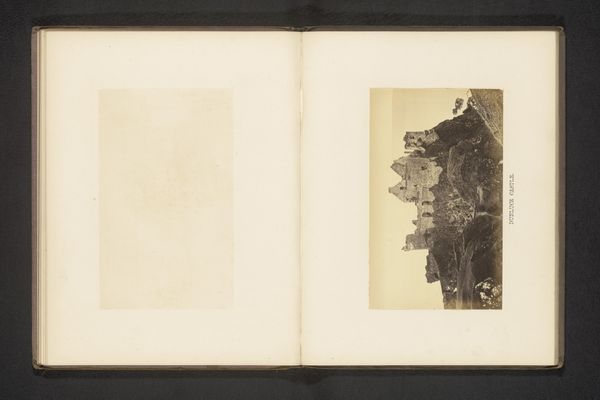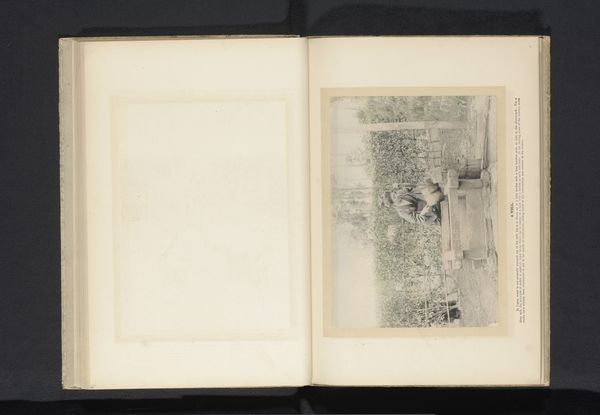
Dimensions: height 167 mm, width 230 mm
Copyright: Rijks Museum: Open Domain
This photograph captures two women creating a floral arrangement. Here, flowers are not mere decoration but symbolic gestures, deeply embedded in cultural memory. In Japanese culture, the art of flower arranging, known as Ikebana, is more than just aesthetics; it is a spiritual practice. Consider the vertical lines of the arrangement, striving towards the heavens, and the asymmetrical balance reflecting a reverence for nature’s imperfections. Think back to ancient Minoan frescoes, where floral motifs suggest renewal and divine favor, or the symbolic use of lotuses in Egyptian art, representing rebirth. The act of arranging flowers taps into a collective, subconscious yearning for harmony and order. The way these women carefully place each stem—a ritual, a dance—echoes the movements in Botticelli’s "Primavera," where Flora scatters blossoms, embodying the season of rebirth. Though separated by time and geography, these images speak to the power of symbols and the cyclical nature of human expression.
Comments
No comments
Be the first to comment and join the conversation on the ultimate creative platform.
